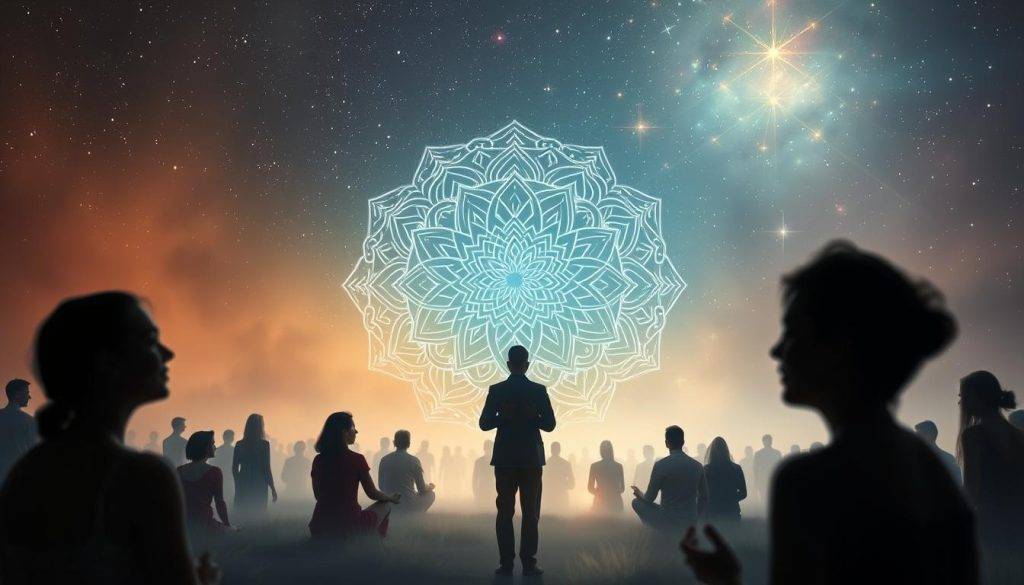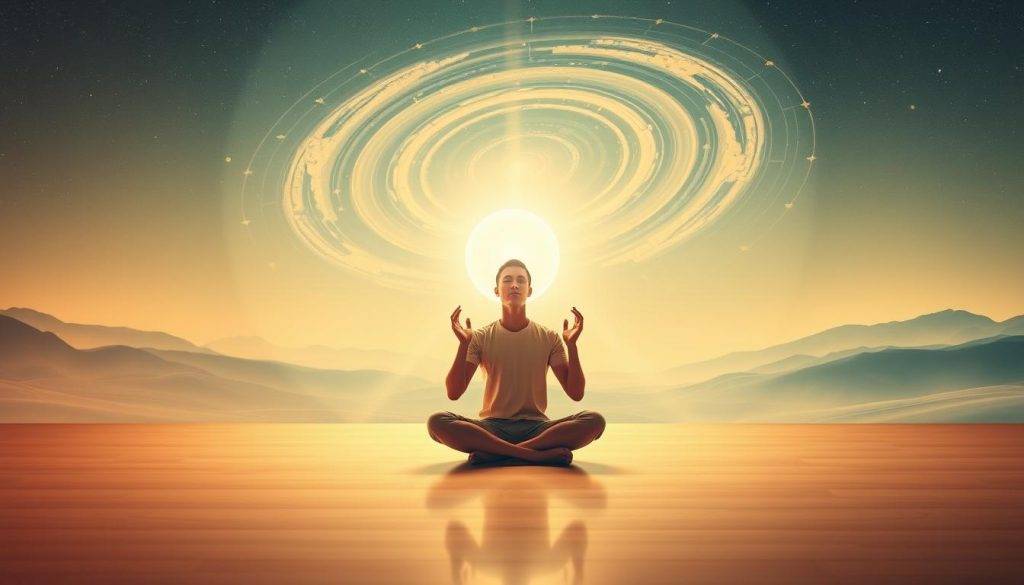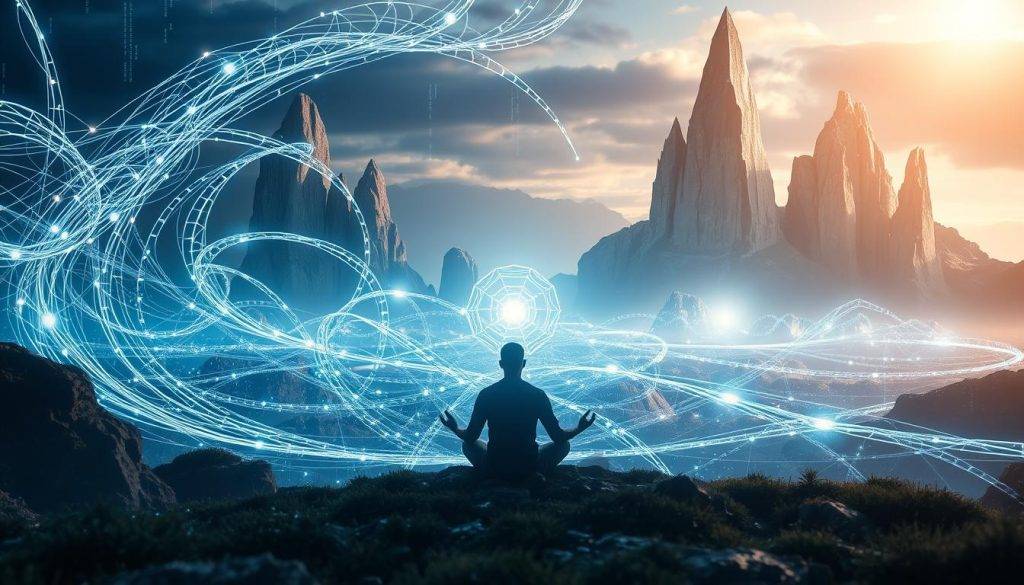“We shape our tools, and thereafter our tools shape us,” observed media theorist Marshall McLuhan. This idea feels strikingly relevant as millions turn to bite-sized spiritual content to redefine their lives. Platforms like TikTok have become unexpected hubs for modern mindset shifts—where ancient practices meet digital immediacy.
Scroll through any For You Page, and you’ll find creators sharing quick rituals for abundance or confidence. Authors like Amanda Montell note how these videos blend time-efficient methods with relatable storytelling. Sarah Perl, a cultural analyst, highlights their appeal: “They turn abstract concepts into actionable steps—perfect for busy lives.”
This trend isn’t just about aesthetics—though dewy-skinned influencers certainly populate the space. It’s a cultural pivot toward personal agency. Users flock to hashtags like #MindsetHacks, seeking tools to reshape careers, relationships, and self-perception. The promise? Transformation fits into 60 seconds.
But does it work? This article explores how short-form content reimagines spiritual growth. We’ll analyze popular techniques, their real-world impact, and why critics urge discernment. Whether you’re curious or skeptical, there’s wisdom in understanding this digital-age phenomenon.
Key Takeaways
- Short-form spiritual content merges ancient practices with modern digital habits
- Creators use visual storytelling to simplify complex mindset techniques
- Trending hashtags highlight demand for quick, accessible personal growth tools
- Critics emphasize balancing quick fixes with deeper self-reflection
- The movement reflects broader cultural shifts toward self-directed change
Manifestation Trends on TikTok
Spiritual practices once confined to ancient texts now thrive in digital spaces. Historical concepts like the Law of Attraction have merged with today’s fast-paced media habits. Amanda Montell notes this shift creates “magical overthinking”—where users obsess over rituals rather than internal growth. Yet, the appeal is clear: bite-sized lessons fit hectic schedules.
The Rise of Spiritual Content in the Digital Age

Short-form videos foster global connections among seekers. A 2023 study found 72% of viewers feel part of a “shared journey” when engaging with mindset-focused creators. These clips often blend affirmations with relatable stories—turning abstract ideas into daily actions. For example, morning visualization routines gain traction through hashtags like #HigherSelfDaily.
Cultural Buzz: Abundance, Higher Self, and Magical Thinking
Algorithms amplify themes of abundance and self-reinvention. Feed recommendations create echo chambers where specific realities feel attainable. A creator might share their “dream board method” while viewers mirror the technique, sparking viral loops. This cycle reinforces beliefs that success hinges on repeated methods rather than chance.
Critics argue this focus risks oversimplifying personal growth. Still, supporters highlight accessibility—complex philosophies distilled into 30-second steps. As cultural analyst Sarah Perl states: “It’s less about magic and more about building consistent mindset habits.”
Examining TikTok Manifestation Techniques
Modern seekers are adopting structured rituals to reprogram their subconscious minds. These practices blend numerology with psychological principles, offering tangible steps to reshape daily experiences.

Nikola Tesla 3-6-9 Method: From Numbers to Manifestation
Inspired by Tesla’s belief that “numbers hold universal secrets,” this manifestation technique uses repetition to amplify intentions. Users write affirmations three times in the morning, six times at noon, and nine times in the evening. One creator describes it as “mathematics meets mindfulness”—a way to bypass limiting beliefs through rhythmic focus.
Over 40% of practitioners in a 2023 survey rated it three out of 5 stars for effectiveness. While some find the structure restrictive, others praise its alignment with natural energy cycles. For a deeper dive into romantic applications, explore this 369 method guide.
Scripting, Speeches, and the 2 Cup Method
Scripting involves writing future scenarios in present tense—like drafting a diary entry from your ideal life. Meanwhile, the 2 cup method uses labeled containers of water to symbolize releasing old patterns and embracing new goals.
These approaches share a common thread: replacing doubt with actionable clarity. As one user shared, “Speaking my desires aloud each afternoon makes them feel real—like I’m rehearsing success.” Critics argue such methods oversimplify growth, yet supporters credit them for fostering abundance mindsets.
By merging creativity with routine, these techniques help people reclaim agency over their narratives. They turn abstract aspirations into daily habits—one written word or intentional action at a time.
Impact and Critiques of TikTok Manifestation Content
Digital platforms have reshaped how people approach personal growth, blending inspiration with unintended consequences. While many find value in quick spiritual practices, experts urge users to consider both the light and shadows of this trend.

Positive Mindset Shifts and Personal Empowerment
Daily affirmations and visualization techniques help users reframe challenges. Dr. Anna K. Schaffner notes: “Repeating positive statements activates neural pathways linked to self-efficacy—this isn’t magic, it’s brain science.” Many report feeling more focused on their goals, with 68% in a 2023 survey claiming improved motivation.
Critiques: Algorithm Influence and Unrealistic Promises
The curated page creates feedback loops where superficial shortcuts overshadow deeper work. Amanda Montell warns: “Algorithms prioritize viral trends over sustainable growth—users risk mistaking luck for strategy.”
| Benefits | Risks |
|---|---|
| Builds daily mindfulness habits | Promotes magical thinking |
| Connects global communities | Ignores systemic barriers |
| Simplifies complex ideas | Overvalues positive thinking |
Critics argue that equating effort with “vibrational alignment” dismisses real-world obstacles. Yet supporters counter that these videos spark meaningful change—even if imperfect. The key lies in balancing inspiration with grounded action.
Conclusion
The journey toward personal growth thrives when inspiration meets intentional action. Modern spiritual tools—from numerical rituals to brain-rewiring affirmations—offer creative ways to reshape daily habits. Yet true success emerges when these methods pair with grounded effort.
Quick shortcuts gain traction by simplifying complex concepts, but lasting change requires more than viral trends. Research shows consistent practices like afternoon visualization sessions can boost motivation by activating neural pathways. However, experts remind us that 19th-century philosophy underpinning these ideas works best alongside practical steps.
Your dreams deserve both imaginative vision and strategic planning. Question systems promising overnight results—real transformation grows through balanced beliefs and daily commitment. Whether using numbers to focus intentions or writing future goals, let these tools spark action rather than replace it.
Embrace methods that honor your unique path. The brain adapts through repetition, but your way forward needs flexibility. By blending innovation with self-awareness, you craft a system for growth that fits your evolving lives—one mindful day at a time.
FAQ
How does short-form video content influence modern manifestation practices?
Platforms like TikTok simplify complex spiritual concepts into digestible formats, accelerating idea spread. This reshapes traditional techniques by emphasizing visual storytelling, repetition, and community-driven validation through likes and shares.
What themes dominate digital spirituality trends today?
Content often focuses on abundance mindset cultivation, connecting with one’s higher self, and symbolic rituals like moon phase alignment. These themes blend psychological principles with mystical symbolism for relatability.
What is the origin of the 3-6-9 manifestation method?
Though misattributed to Nikola Tesla, this technique uses numerical repetition—writing goals three times morning, six times afternoon, nine times evening. It leverages pattern recognition in the brain to reinforce intention through structured consistency.
Can modern techniques like scripting rival traditional journaling methods?
Scripting’s strength lies in its emotional immediacy—writing desires in present tense as if achieved. Unlike reflective journaling, it activates the brain’s reward centers through vivid sensory details, creating neural pathways aligned with desired outcomes.
What are the primary critiques of algorithm-driven manifestation content?
Critics highlight confirmation bias in personalized feeds, oversimplification of deep psychological work, and promotion of “magical thinking” without accountability. However, supporters argue these methods democratize access to self-improvement frameworks previously gatekept in niche communities.
How does the 2 Cup Method work for reality shifting?
This ritual involves labeling two cups: one with current circumstances, the other with desired states. Pouring water between them symbolizes energetic transfer. It combines tactile engagement with subconscious reprogramming, making abstract goals feel physically actionable.
Why do manifestation videos gain traction faster than other self-help content?
Algorithms prioritize emotionally charged content that sparks engagement. Videos promising rapid transformation through “secret codes” or “universal shortcuts” trigger dopamine responses, encouraging shares and comments that boost visibility.




























































